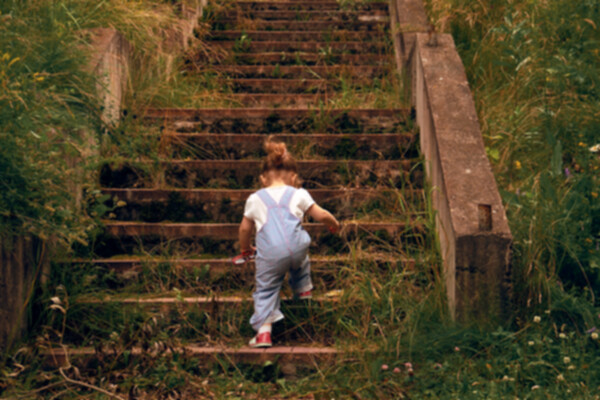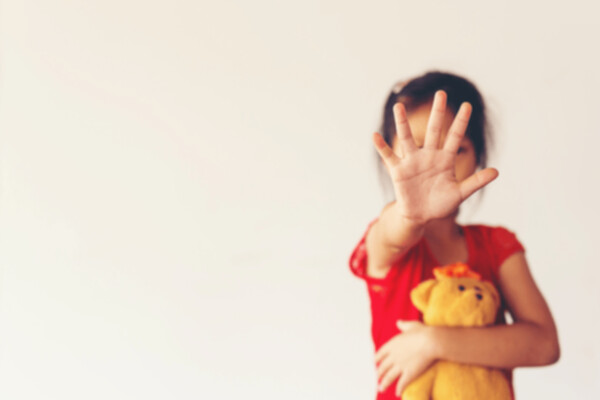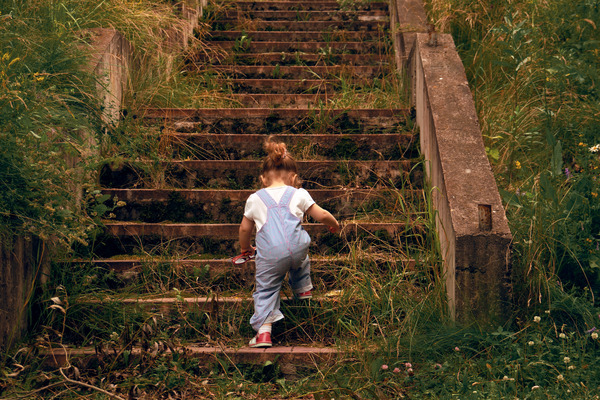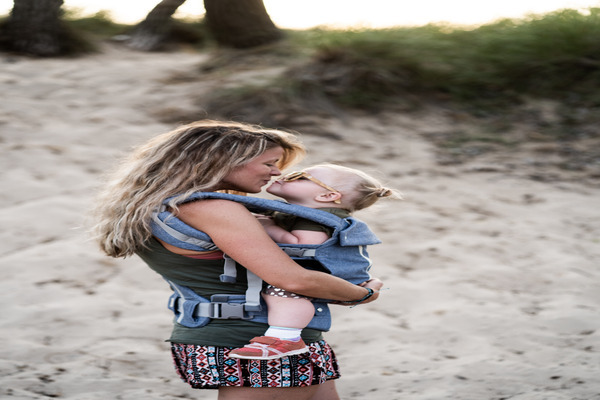What is disorganized attachment and what is its relationship with child abuse? In this article you will be able to know what it is and what its consequences are.

Attachment has a clearly evolutionary function since it allows promoting the capacity for autonomy of individuals and healthy development, both physical and psychological. Secure attachment provides the necessary security to be able to explore the environment around us, a key aspect for learning.
However, not all people develop a secure bond in childhood and a clear example of this is those people who suffer abuse throughout this stage. Most of these end up developing a disorganized attachment. In this article you will be able to discover what exactly it is, what its consequences are and what the treatment for attachment traumas
What is attachment?
Attachment is the emotional bond established between a child and their caregivers. Specifically, Attachment Theory postulates that the repetition of positive interactions between the child and his or her caregiver provides the child with the perception that the world is safe. This security, according to this theory, would come from the child’s feeling that he is worthy of the love of other people and that there are significant figures who will give him shelter and support if he needs it.
Bowlby (child psychologist, pioneer in the study of child development and in the development of Attachment Theory) affirms that attachment can explain different psychological problems such as anger, emotional withdrawal, anxiety, etc. since these can arise as a consequence of an attachment insecure with significant figures. It is for this reason that the configuration of the first relationships can significantly influence future interactions with other people such as friends, partners, etc. even with oneself.

What is disorganized attachment?
There are different types of attachment depending on the emotional bond established between the child and their caregiver. One of them is the disorganized insecure attachment and this is characterized by a threatening attachment where parents or caregivers behave in an unpredictable and hostile manner. When we refer to unpredictable we mean that the child cannot predict the behavior of his/her caregiver, quite the opposite of secure attachment, where the child, based on past interactions, knows that his/her parents will respond to the needs. her.
It is estimated that 80% of children who have been abused have this type of attachment and it is usually common for their parents to have also had hostile caregivers and a disorganization of attachment. The interaction they maintain is a mix between approach and avoidance, so the adult’s behavior is characterized by being inconsistent and unavailable to the child’s needs, resulting in care based on mistreatment, abuse and violence. This relationship pattern leads to disorganized behaviors in the child that alternate between an intense search to meet her needs and rejection of significant figures for fear of her responses.
Consequences of children with this type of attachment:
- Hypervigilance: Children with disorganized attachment tend to be constantly alert, monitoring the caregiver’s behavior with the aim of avoiding a possible aggression or violent situation. Therefore, they will remain attentive to possible indicators that may predict an attack.
- Low self-esteem: The first contact we have with social relationships and the world is through our parents or caregivers. Not feeling loved in this first relationship will lead to feelings of guilt and self-rejection. That is why children who have this type of attachment do not feel worthy of love. They tend to perceive themselves as insufficient and guilty, attributing the abuse to characteristics of their way of being. Therefore, they are usually insecure children and sometimes, they present hyperactive behaviors with the aim of attracting the attention of other people around them and thus obtaining the attention that they do not find in their caregivers.
- Fear of caregivers: Children who have been mistreated by their caregivers end up developing fear of them, associating them with discomfort, guilt and sadness. In fact, this type of care can lead to the development of traumas since abuse and mistreatment occur, so much so that these types of experiences make them more susceptible to suffering from post-traumatic stress disorder.
- Fear of exploration: A secure attachment guarantees the child the certainty that his parents will cover his needs, so the child will not have to pay attention to the responses of his caregiver and will dedicate himself to exploring the environment where he is (through carrying out activities, new links, etc.). People with disorganized attachment are afraid of both abandonment and possible aggression, so they avoid exploring the world around them for fear of being punished by their parents or for fear of encountering people who treat them with violence. This fear ends up harming cognitive development since they cannot be in contact with different stimuli.
- Dissociation: Children who experience situations of violence and abuse end up suffering from dissociation. Being in situations in which they cannot flee and the figures in charge of their care are the ones who pose a threat, they lose contact with reality as a defense mechanism.
- Behavior problems: The figures who are in charge of our care also function as a means to learn socially acceptable behaviors and one of the ways in which they are learned is through simple observation. Therefore, having experienced situations of abuse can lead to learning this type of behavior and reproducing it in other situations such as in a relationship, at school, etc. In fact, people who have had this type of attachment during childhood are more likely to develop antisocial behavior.
- Mood disorders: Identification and emotional regulation begin to be learned from childhood through the support of our parents. When the child is not provided with strategies to regulate their emotions and complicated situations, they end up being more susceptible to suffering from mood disorders such as depression.
- Cognitive problems: Our memory has a survival function and sometimes, in the face of traumatic events that are difficult to process cognitively, our memory “protects us” by making that content inaccessible to memory. It is for this reason that people who have suffered abuse during their childhood may have gaps in their memories and, therefore, reasoning and speech with long lapses.

Treatment:
Psychological treatment to treat trauma and/or problems related to attachment focuses mainly on:
- Consolidate a secure bond with the therapist that facilitates both the exploration of painful aspects and the modification of those thought patterns that make it difficult to establish healthy relationships both with others and with themselves. An example of dysfunctional thinking that could occur in this case would be: “Everyone is going to hurt me and that’s why I have to distrust everyone I interact with.”.
- Analyze those behaviors, perceptions and feelings that occur today but are related to the experiences of your childhood.
- Emotional accompaniment to explore your current situation and how you establish relationships with others, analyzing both the tendencies and expectations you have of others.
There are experiences throughout our lives that are difficult to manage and sometimes generate so much pain and discomfort that it becomes an impossible task for us to recover on our own. Time does not heal everything and choosing not to treat that pain can lead to a deterioration in our mental health. It is for this reason that it is important that when faced with any discomfort that interferes with our daily lives, we go to a professional with the aim of improving our emotional well-being.








